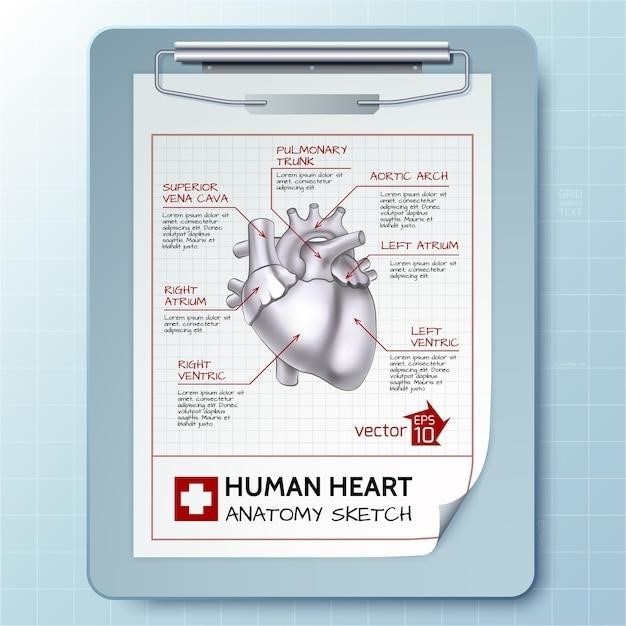Eric Metaxas’s “Letter to the American Church”⁚ An Overview
Eric Metaxas’s “Letter to the American Church” is a compelling call to action, drawing parallels between the contemporary American church and the German church’s failings in the 1930s. Available in various formats, including PDF and eBook, the book sparks crucial conversations.
The Book’s Central Theme and Timely Relevance
Metaxas’s central theme revolves around a stark warning⁚ the alarming similarities between the contemporary American church and the German church’s inaction during the rise of Nazism. He argues that a pervasive spiritual apathy and a reluctance to confront societal evils mirror historical complacency. The book’s urgency stems from the author’s belief that the American church is facing a critical juncture, risking a similar moral failure; This timely relevance is underscored by current socio-political divisions and the erosion of traditional values. Metaxas’s call for a return to biblical principles and courageous action resonates deeply with concerns about religious freedom and cultural shifts. The book’s message, therefore, isn’t merely historical analysis but a prophetic warning demanding immediate attention and response from American Christians.
Comparison to the German Church of the 1930s
Metaxas draws unsettling parallels between the American church today and the German church’s response to the Nazi regime in the 1930s. He highlights the German church’s failure to actively resist the rising tide of evil, choosing silence and accommodation over prophetic confrontation. This inaction, Metaxas argues, allowed the Nazi regime to consolidate its power and ultimately led to unimaginable atrocities. He suggests that a similar passivity and compromise within the American church could have equally devastating consequences. The comparison isn’t meant to equate the two situations directly, but rather to serve as a cautionary tale, emphasizing the potential dangers of spiritual apathy and the crucial importance of courageous faith in the face of societal pressures. The historical context provides a powerful framework for understanding the urgency of Metaxas’s call to action.
Key Criticisms of the Modern American Church
Metaxas levels several significant criticisms against the contemporary American church in his book. He laments a pervasive cultural accommodation, where the church prioritizes societal acceptance over bold proclamation of biblical truth. A fear of controversy and a desire for relevance, he argues, have led to a diluted gospel and a compromising stance on crucial moral issues. He also critiques a lack of courageous engagement in the public square, with many Christians remaining silent in the face of injustice and moral decay. Furthermore, Metaxas points to an overemphasis on personal comfort and a neglect of the church’s prophetic role in society. He suggests that a focus on individual salvation, without a corresponding commitment to societal transformation, is insufficient and ultimately undermines the church’s mission. This critique forms the foundation for his call for a renewed commitment to biblical fidelity and courageous action.
Exploring the Book’s Content and Arguments
Metaxas’s “Letter to the American Church” delves into historical parallels, biblical foundations, and a potent call to action, urging a return to authentic Christian faith and courageous engagement with contemporary challenges.
Analysis of the Historical Parallels Drawn
Metaxas’s central argument rests on unsettling parallels between the complacency of certain segments of the American church and the perilous silence of the German church in the face of Nazi Germany’s rise. He meticulously details the historical context of the 1930s, highlighting how the German church’s failure to actively resist the encroaching tyranny ultimately led to devastating consequences for both the church and the nation. The book doesn’t shy away from the uncomfortable comparisons, prompting readers to confront the potential for similar spiritual and moral compromises in contemporary America. The analysis isn’t merely historical; it’s a stark warning, urging vigilance against the subtle erosion of faith and the dangers of passive acceptance in the face of injustice. Metaxas masterfully weaves together historical accounts with contemporary observations, creating a compelling narrative that forces readers to reflect on the potential consequences of inaction. The parallels serve not as mere comparisons, but as urgent calls to action, reminding readers of the importance of actively defending faith and justice.
Examination of the Biblical Basis for Metaxas’s Claims
Metaxas grounds his critique of the American church firmly in biblical principles, drawing extensively from scripture to support his assertions. He doesn’t present a purely theological treatise but utilizes biblical passages to illustrate the responsibilities of believers in the face of societal challenges. The book’s core argument isn’t solely based on historical analysis; it’s interwoven with scriptural references that underscore the call for active engagement in the world. Key biblical themes of justice, righteousness, and the responsibility to speak truth to power are woven throughout the narrative. Metaxas meticulously connects these scriptural passages to the historical parallels, arguing that the church’s silence in the face of evil directly contradicts the teachings of Jesus and the apostles. This approach provides a solid theological foundation for his critique, making the book relevant not only to those concerned about historical parallels but also to those seeking a biblically grounded perspective on the church’s role in society.
Call to Action and Practical Applications
Metaxas’s “Letter to the American Church” isn’t merely a critique; it’s a clarion call to action. He doesn’t leave readers wallowing in despair but provides a pathway toward positive change. The book urges Christians to actively engage in the public square, to speak truth to power, and to fight for justice. Practical applications are suggested, though not explicitly detailed, encouraging readers to find their own avenues for engagement within their communities. The call to action transcends simple activism, emphasizing a deeper spiritual awakening and a renewed commitment to biblical principles. It encourages prayer, introspection, and a reassessment of personal values in relation to societal norms. Metaxas inspires readers to find their unique voices and utilize their gifts to serve the community and resist the encroaching tide of secularism. The book concludes not with a sense of hopelessness, but with a renewed hope in the power of the Gospel and the potential for positive change through dedicated Christian action.
Reception and Reviews of “Letter to the American Church”
Reviews of Metaxas’s “Letter to the American Church” are varied, sparking robust discussion and debate among readers and critics alike. The book has garnered both strong praise and pointed criticism.
Positive and Negative Feedback from Readers and Critics
Online reviews reveal a spectrum of responses to Eric Metaxas’s “Letter to the American Church.” Positive feedback frequently highlights the book’s urgency and its compelling historical parallels between the German church under Nazi rule and the current state of the American church. Readers appreciate Metaxas’s passionate call for Christians to actively engage in societal issues and to stand firm in their faith, even in the face of adversity. The historical analysis, particularly the comparison to the German church’s silence in the face of rising tyranny, is often praised for its thought-provoking nature and relevance to contemporary challenges. Many find the book to be a stirring call to action and spiritual awakening.
Conversely, negative critiques often target the book’s tone, perceived as overly alarmist or judgmental. Some critics argue that the historical parallels are oversimplified or inaccurate, failing to fully account for the complexities of both historical contexts. Concerns are also raised regarding the book’s potential to foster division within the church or to promote a specific political agenda. The lack of concrete solutions or practical steps beyond a general call to action is also cited as a shortcoming by some reviewers. Despite these varied perspectives, “Letter to the American Church” undeniably provokes important dialogue and self-reflection.
Study Guides and Companion Resources
To facilitate deeper engagement with Eric Metaxas’s “Letter to the American Church,” several supplemental resources are available. A dedicated study guide exists, offering a structured approach to exploring the book’s themes and arguments. This guide typically includes discussion questions, reflection prompts, and potentially supplementary readings, enabling individual or group study. The structure often follows a chapter-by-chapter format, encouraging thoughtful consideration of each section. Such guides are valuable for both personal reflection and facilitating group discussions within churches or Bible studies. Additionally, online forums and communities may offer further resources, such as reader reviews, insightful commentary, and opportunities for discussion amongst those who have read the book. These online spaces can help to foster a wider sense of community and shared learning around Metaxas’s central arguments and the issues he raises.
While not explicitly mentioned in all online sources, the availability of additional resources like podcasts or webinars related to the book’s themes should be considered. These supplementary materials may provide alternative perspectives or expand upon certain aspects of Metaxas’s arguments. The existence and accessibility of these resources can significantly enhance the overall learning experience and facilitate a more comprehensive understanding of the book’s message.
Availability in Different Formats (e.g., PDF, eBook)
Eric Metaxas’s “Letter to the American Church” enjoys widespread accessibility across various formats, catering to diverse reader preferences and technological capabilities. The book is readily available as a physical paperback, allowing for a traditional reading experience. For those who prefer digital reading, the book is offered as an eBook, compatible with most e-readers and reading applications on tablets and smartphones. This digital format offers convenience and portability, allowing readers to access the text anytime, anywhere. Furthermore, the book is often available in PDF format, suitable for printing or reading on computers. This format is particularly useful for those who prefer to annotate directly on the text or share specific passages easily. The availability in multiple formats ensures that a wider audience can access and engage with Metaxas’s message, regardless of their preferred reading method or technological resources. The widespread availability underscores the book’s significance and its accessibility to a broad readership.

























